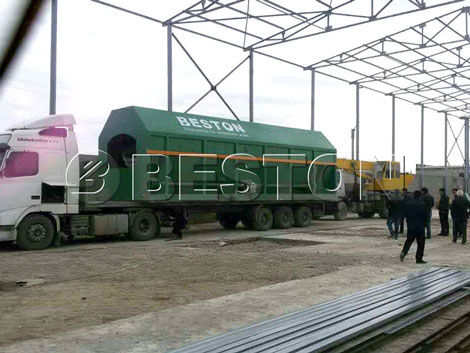The foundation of any effective recycling endeavor is sorting waste. Separating the different materials that constitute household waste is crucial to facilitating the recovery of as many useful materials as possible from every waste batch.
In effect, the sorting technology that is at the heart of every garbage sorting machine for sale is a means through which we as a modern society can use combat pollution. This technology reduces the amount of waste that ends up in landfills. It is this technology that helps to breathe a new life into the recyclable materials.

However, not many people have an intricate understanding of the underlying technology that our waste plants employ. As such, we will explore the underlying garbage treatment sorting plant technology for those interested in these facilities as well as the entrepreneurs looking to invest in such municipal waste recycling plant. Please note that the technology of interest in this article is that used in mixed solid waste plants, as these are somewhat the most popular plants on the market.
#1. Uniform Feeders – Typically, mixed waste sorting plants will have a uniform feeding plate to even feed the waste input. To optimal performance of the plant, the feeder should even distribute the waste at every stage from start to finish.
#2. Drum Screens/Trommel Separator – This piece of trash recycling plant entails the very first part of waste processing and sort material based on size. It consists of a large drum perforated with holes of various sizes as needed. Materials of smaller diameter than the hole pass through the hole as it is rotating while the large pieces are retained in the drum, effectively sorting items by size.
#4. Induction Sorting – This sorting technology of solid waste management facility involves sending the waste material along a conveyor belt that has inbuilt sensor underneath. The sensors are used to detect different kinds of materials that are passing along the conveyor belts. Thereafter, a system of air jets linked to sensors is used to separate the material, effectively sorting the material.
#5. Near Infrared Sensors – When materials are illuminated, they reflect light. The amount of light they reflect in the near infrared spectrum is quite unique and discernable, allowing the NIR sensors to distinguish the various materials in the waste batch and thereby sort the materials.
#6. X-Ray Technology – Some more advanced sorting plants are using X-ray to differentiate and thereafter sort materials based on the density of the material. By illuminating the materials with X-rays, plant operators are able to determine the density of each item with accuracy.
A combination of these technologies is more than enough to sort waste with a high degree of accuracy. However, some plants do operate manual separation to further improve their sorting process. Either way, the sorting technologies have developed sufficient enough to improve the whole waste processing significantly. Go to this page to find more: http://bestonpyrolysisplant.com/solid-waste-treatment-plant/.